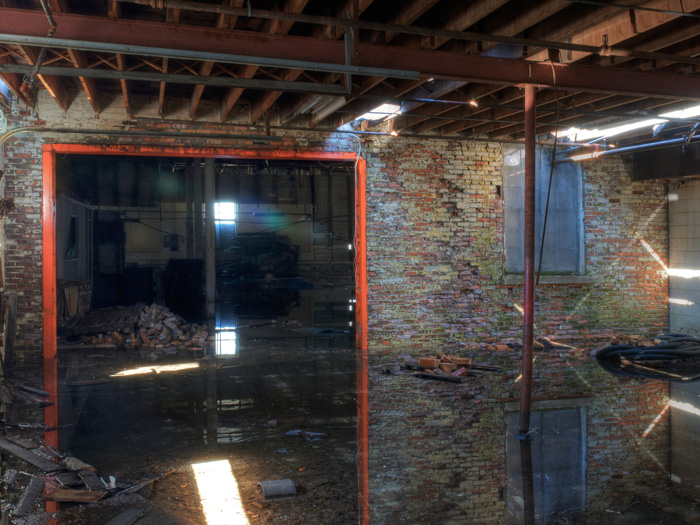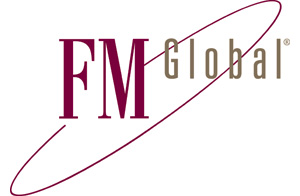Risk Scenario
Blind Faith
Disclaimer: The events depicted in this scenario are fictitious. Any similarity to any corporation or person, living or dead, is merely coincidental.
Part One: Cocky Sons of Guns
With a steady, fluid motion, Ray Fines stretched his six-foot-two-inch frame to its limit and smacked the tennis ball toward his opponent Robert Gailey on Gailey’s ad-court side.

Fines served with a lot of top-spin, so the shorter Gailey had to hop a little on his return, but he reached out and backhanded the ball masterfully down Fine’s forehand side for a winner.
Someone whistled appreciatively from the grassy court-side banks of the hard-surface courts at San Diego’s Corona del Playa Country Club: Neither Fines nor Gailey looked over.
For one, they were both well-paid executives with the highly successful niche luxury automobile manufacturer Charing Motors, based in San Diego. The company’s 2014 revenue was $850 million.
It was fair to say success had gotten to their heads a little bit and they tended to be socially unapproachable.
They were also two of the club’s top players and were used to people watching them play.
“Game and set,” Gailey said as Fines trotted over to pick up the ball.
“One more?” Fines asked, looking over to Gailey and hoping for a chance at revenge.
“Nah, we need to get set up for the barbeque tonight,” Gailey said. “I’d better get back to the house or I’m going to be the one getting grilled.”
After showering, Gailey and Fines stopped in the clubhouse for some sparkling water and freshly squeezed orange juice, fortified with raw vegan supplements. They were quietly hydrating when Gailey, flipping through the news feeds on his mobile phone, stopped.
“Hmmm,” he murmured.
“What?” said Fines, Charing Motors’ risk manager.
“Looks like there’s a sizable tropical storm heading for mainland China. Could turn into a typhoon,” said Gailey, the company’s procurement director.
“We don’t have any suppliers there,” Fines said.
“No, we don’t,” Gailey agreed.
“But some poor son of a gun does. Looks like it’s headed right at the Pearl River Delta. Lots and lots of tech suppliers there,” he said.
“First we miss Tohoku, now we luck out on this. We must be doing something right,” Fines said.
Charing Motors, back in its infancy, had escaped the supply chain damage that many auto manufacturers suffered when an earthquake and tsunami devastated Japan and its economy in 2011.
“Evidently so,” Gailey said, looking up from his mobile phone and flashing a suntanned, winning smile at Fines.
Part Two: A Stunning Revelation
Three weeks later, Gailey and Fines were in a conference room, hunched over a speaker phone.

“Good morning,” Gailey said as the other caller beeped on.
“Good afternoon,” said the caller in Taipei, acknowledging the 15-hour time difference between Taipei and San Diego.
After some brief and awkward preliminaries, Gailey got to the point.
“We’re concerned about these delivery delays we’re seeing, Dr. Wu,” Gailey said. “We’re looking at a three-week backlog as things stand, and I’m not confident the delays won’t get even longer,” Gailey said.
There is a long pause.
“Are you with me, Dr. Wu?” Gailey said.
“Yes. I’m with you,” said Dr. Wu.
Dr. Wu, who earned his Ph.D. at Carnegie Mellon University in Pittsburgh, is the chief executive officer of Paramount Technologies, which assembles the collision avoidance and cruise control components for Charing Motors.
“We … it’s hard to explain but we are conducting an investigation into our suppliers. We have some suppliers in the Pearl River Delta in China and we are uncertain as to their status,” Dr. Wu said.
Fines punched the mute button.
“Pearl River? I didn’t think we had any exposure there,” Fines said.
Gailey unmuted the phone.
“Pearl River, you say? That area was heavily damaged by Typhoon Lei, was it not?”
“Yes sir, substantial damage. We have multiple suppliers there we fear have been heavily damaged,” Dr. Wu said.
“Well how long until you? …” Fines began but was cut off by Dr. Wu’s response.
“We cannot offer a timeline on when our investigation will be finished,” Dr. Wu said.
Robert Gailey and Ray Fines just look at each other. In the space of one conversation, their confidence level in the short- to mid-term success of their company plummeted.
Part Three: The Flood in Bao ‘an
Wearing rubber boots, Vince Yee sloshed across his factory floor at the semi-conductor manufacturer Yee Industries in Bao ‘an, causing a pair of two-foot-long grass carp that typhoon flood waters stranded in his shop to swim for cover.

Yee grimaced at the sight of the river fish in his once-pristine manufacturing facility. He climbed up on a flight of concrete steps. Gaining that perch gave him enough elevation to sit down and light a cigarette.
Yee exhaled cigarette smoke and looked out over the water-covered factory floor. Here and there, employees moved about in vain attempts to hoist expensive machinery up on blocks in an effort to lessen the water damage.
It’s Yee that supplies the semi-conductors to Dr. Wu’s Paramount Technologies, without which Wu will not be able to assemble the collision-avoidance technology for Charing Motors’ luxury sedans.
Yee takes another long drag on his cigarette and his cell phone vibrates as he sees a water snake working its way under a water-soaked piece of equipment that cost him $750,000.
“Hello?” Yee says in a dour tone of voice.
“Yes, this is Vince Yee. Yes, Dr. Wu.”
Yee looks out over the factory floor as Dr. Wu talks. From his expression, Yee would rather throw his phone in the flood water then listen to what Dr. Wu is asking him.
“No. No. I have no flood insurance,” Yee said.
“You can’t even get flood insurance down here. I’m 30 centimeters above sea level, Dr. Wu. You know that.”
Yee grimaces in frustration and anger as Dr. Wu asks him another question.
“Your guess is as good as mine, Dr. Wu. It will be a bloody miracle if I ever get back into business at this rate. But I’ll let you know. Good bye.”
Yee turns off the cell, runs his free hand over his face and hair in frustration and then flips his cigarette butt into the flood waters.
Part Four: Searching in Vain
Lee Ackles, Charing Motors CFO, leans back in his office chair and looks away from Robert Gailey and Ray Fines toward the San Diego Harbor.
“I’m just trying to get my head around this and I don’t think I can,” Ackles says to Gailey and Fines, when he brings his gaze back from the water.
“From what you’re telling me, our collision-avoidance system supplier really doesn’t know at this point where it can get the semi-conductors it needs to finish our product,” Ackles said.
“That’s correct,” Gailey said bravely.
“We’ve determined that a lot of their suppliers are single-source. Many of them were in the Pearl River Delta which was so heavily damaged by the typhoon in May.”
“Five months ago,” Ackles said, looking at Gailey and Fines like they had no brains.
“Correct.” It was Fines that managed to speak this time.
“And what have you found out in the past five months?” Ackles asked.
“There’s a lot of variation in product specs, even the names of the products in some of these Asian countries,” Gailey said.
“The semiconductors we’re looking for are really hard to find in Taiwan, Thailand or even mainland China right now,” Gailey said.
“We hope to have this thing nailed down in another month but as it stands, we can’t complete production on the CM-5 or the CM-7 until we do,” Gailey said.
“The CM-5 and the CM-7,” Ackles said. At this point he clicked his mouse and looked at some data on his screen.
“We’re looking at a real punch in the gut unless we can get it done much sooner guys,” Ackles said.
“Paramount Technologies, that’s the company in Taipei?” Ackles asked. He clicked and looked at his computer screen again.
“Wow, $4 million in billings to us last year. Get on a plane, go see Dr. Wu and company and get us a quicker answer. Both of you. Go tomorrow.”
Part Five: A Visit to the Delta
Robert Gailey and Ray Fines are passengers in a 1969 Piper Cherokee 6/260 that is winging its way along the Pearl River toward the Bao ‘an location of Yee Industries. The Piper is equipped with twin pontoons and makes a perfect river landing.
Jackie Chen, the Piper Cherokee pilot, turns and smiles toothily at Gailey and Fines from behind yellow-tinted sunglasses after his plane drifts up to the dock outside of Yee Industries and is secured by a Yee Industries employee.
“Just like I said, gentleman, smooth as silk,” Chen said, mimicking the smooth descent and landing of the plane with his hand.
Gailey and Fines both try forced smiles but just clamber out instead.
Walking up the path to the Yee Industries factory, Fines scanned the property and saw little sign of activity.
“Doesn’t look like they are even close to operational,” Fines said.
“Who knows,” Gailey said as they reached the factory door.
Entering the factory through an open side door, Gailey and Fines encounter a factory floor that is now dry, but shows no indication of being able to achieve full production anytime soon.
In one corner, six employees are sitting around a table hand-fashioning some semiconductor parts.
“Can I help you gentlemen?” said Vince Yee, as he approached the Americans.
“We’re looking for Vince Yee,” Gailey said.
“I’m Vince Yee,” said the factory owner.
“I’m Robert Gailey and this is Ray Fines. We’re with Charing Motors out of San Diego in the U.S.”
Yee stared at Gailey and Fines blankly.
“You’ve heard of Charing Motors?” Fines said.
“No. Never heard of it,” Yee said.
Gailey and Fines pause as this latest piece of information resonates.
“We make cars,” Gailey said.
“You want to buy this factory? You could make cars here in China,” Yee said.
“That’s not what we had in mind,” Fines said.
The conversation with Yee yielded one piece of productive information. After looking at the specs of the semiconductors Charing Motors needs to assemble its collision-avoidance system, Yee gave Fines and Gailey the name of a Pearl River manufacturer still at full production.
This manufacturer, though, is upstream in Panyu.
“Can you take us to Panyu?’” Gailey asked Jackie Chen as he and Fines get back to the Piper Cherokee.
“Can I take you to Panyu? I was born in Panyu,” Jackie Chen said with a chuckle.
“Just get in and fasten your seatbelts.”
As the Piper Cherokee takes off, Ray Fines and Robert Gailey avoid eye contact, neither of them knowing how soon they’ll be able to get the part they need to keep crucial manufacturing processes going.
It will be a full year until Charing Motors can resume full production. The privately held company recorded a 40-percent revenue drop for fiscal year 2015.
![]()
Risk & Insurance® partnered with FM Global to produce this scenario. Below are FM Global’s recommendations on how to prevent the losses presented in the scenario. This perspective is not an editorial opinion of Risk & Insurance®.
1. Demand more from first and second-tier suppliers: It’s not enough to trust that your first and second-tier suppliers have an adequate knowledge of their suppliers’ property-CAT exposures and resilience. Insureds, working through their brokers and carriers, should create contractual certainty with their suppliers that their supply chain will be resilient in the event of a natural catastrophe or some other supply chain interruption.
2. Identify at-risk locations: Locations such as the Pearl River Delta of China is a prime spot for property losses, business interruption and supply chain problems due to the extremely high concentration of technology, automotive and telecommunications parts suppliers in natural hazard-exposed locations. As vulnerable as it is, however, the Pearl River Delta is just one example of a super-exposed location that could result in substantial business interruption should a windstorm, earthquake, flood or some other event transpire.
3. Involve the claims executives: In mapping out business interruption, property and supply chain risk and risk transfer options, make sure to involve the claims executives from your carrier in the discussion. Involving only the broker and the carrier at renewal time could result in an incomplete understanding of your company’s claims recovery chances in the event there is a loss.
4. Pinpoint single-source suppliers: One of the most vulnerable parts of your supply chain is that occupied by single-source suppliers. The use of single-source suppliers in some cases might be unavoidable, but identifying those parts of your supply chain that are single source and addressing them with specific risk management strategies is a good idea.
5. Everyone gets hit: Never assume that just because you haven’t suffered a substantial property, business interruption or supply chain loss that you won’t. An increasing complexity of global supply chains and economic forces that dictate business establishment in natural hazard-exposed areas almost guarantees, that sooner or later, your company will face a peril of one kind or another.











